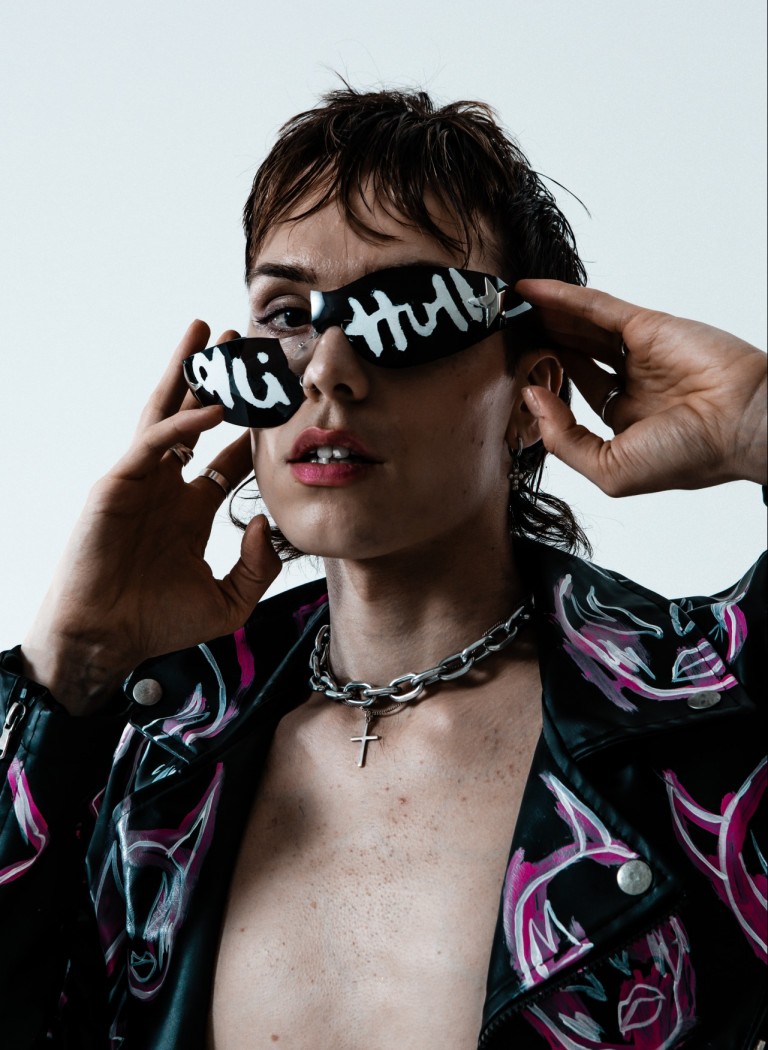For artist Olli Hull, sustainability isn’t just a buzzword: it’s an ethos, ingrained into every creation with intent, purpose, and commitment.
The London-based artist and designer has built his namesake brand to be fully eco-conscious and, in the spirit of honouring this commitment, elected to breathe new life and upcycle his existing garments as part of new collection, ‘Somethings Old, Somethings New’. In this collection, Hull continues to unify art and fashion – blurring the lines between the two mediums and protesting the beliefs that lend themselves to making art and fashion separate and inaccessible.
The designer’s newest work, is a poignant embodiment of the notion that ‘the medium is the message’ – each piece carries weight beyond the sustainable design process, and features Hull’s signature hand-painted illustrations, inspired by the designer’s own narrative of gender and identity. With ‘Somethings Old, Somethings New’, Hull continues to smash archetypes, taking this idea one step further by reversing it and creating not only garments, but wearable statements. In effect, the new collection is headlined by a series of one-of-a-kind upcycled wedding dresses, entirely transformed by Hull into anarchic symbols of protest against outdated traditions.
We sat down with Olli Hull to discuss the collection, as well as his journey into the fashion industry and experiences as a queer artist, and his label’s steadfast commitment to the sustainable fashion movement.
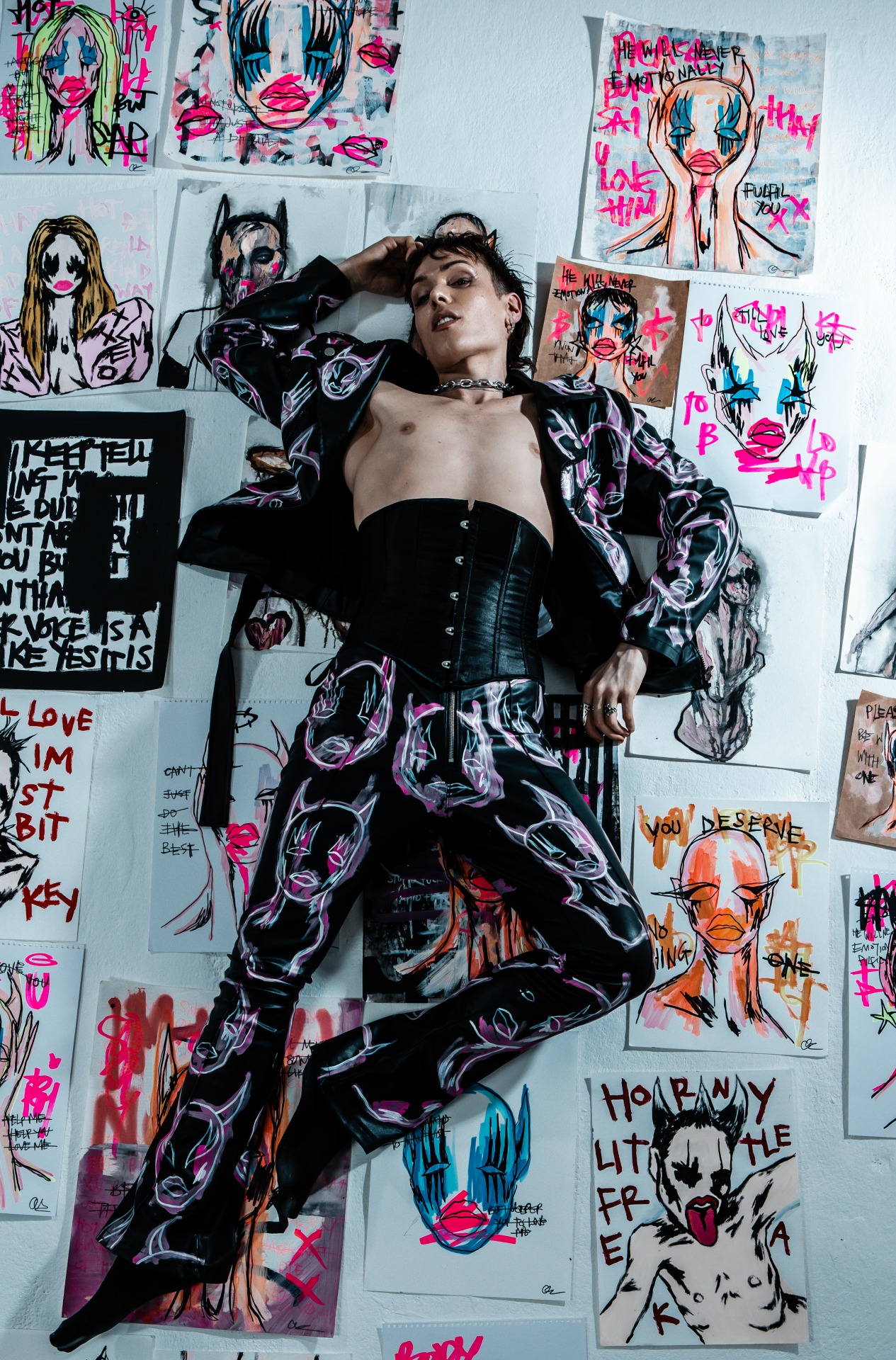
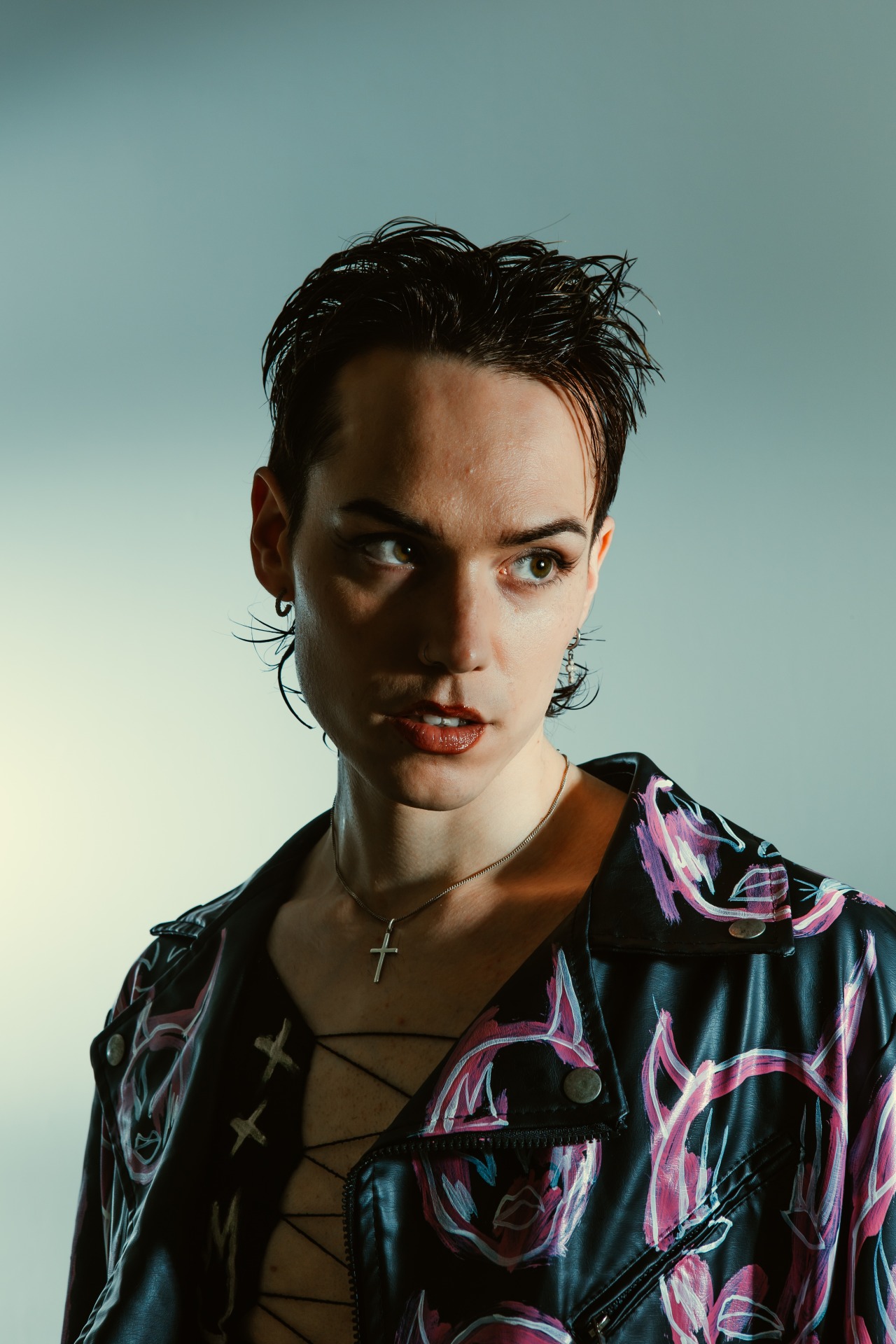
Congratulations on your latest collection! What inspired you to revisit your previous work? How did you approach the design process for this collection?
Thank you so much! Revisiting my previous work felt necessary because I felt like I had some unfinished business with it, which was holding me back from exploring new creative territories. My studio was full of half-finished pieces and stuff that didn’t quite hit the vibe I’m on now.
From both a personal and a sustainable standpoint it didn’t make sense to me to keep making new work until I’d finished or recycled all of these discarded and unfinished ideas. It was super rewarding breathing new life into my past work and making it mesh with my new vision.
Each of your pieces individually present a story through their unique design – how do you assign different hand-painted motifs to different garments? Do you have particular garments in mind when creating a painted design, or vice versa?
There’s kind of two processes going on at the same time. On one side, I’ve got my diary/sketchbook where all my ideas, poetry, and images come to life. On the other, I’m hunting for garments that speak to me with their own unique style and potential. It’s like a dance between the two—flipping back and forth from sketchbook to garment, figuring out what each piece wants to become. It’s all about letting the garment and the story work together until they click.
One of our favourite pieces is the ‘How can I be a mermaid when the ocean is dying?’ dress, could you tell us about this series and what the name signifies?
‘How can I be a mermaid when the ocean is dying’ is a line I scribbled in my sketchbook years ago, and it’s since found its way onto bags, paintings, and now this wedding dress. To me, it feels like a question a child would ask their parents — innocent but loaded with meaning. It’s wondering how we can still dream and be our true selves when the world around us is falling apart.
This line captures the tension between innocence and awareness, between our dreams and the harsh realities we face, especially concerning environmental issues. The dress embodies this conflict, merging fantasy with a poignant message about the state of our planet. It’s a call to action and a reminder of the beauty we’re at risk of losing.
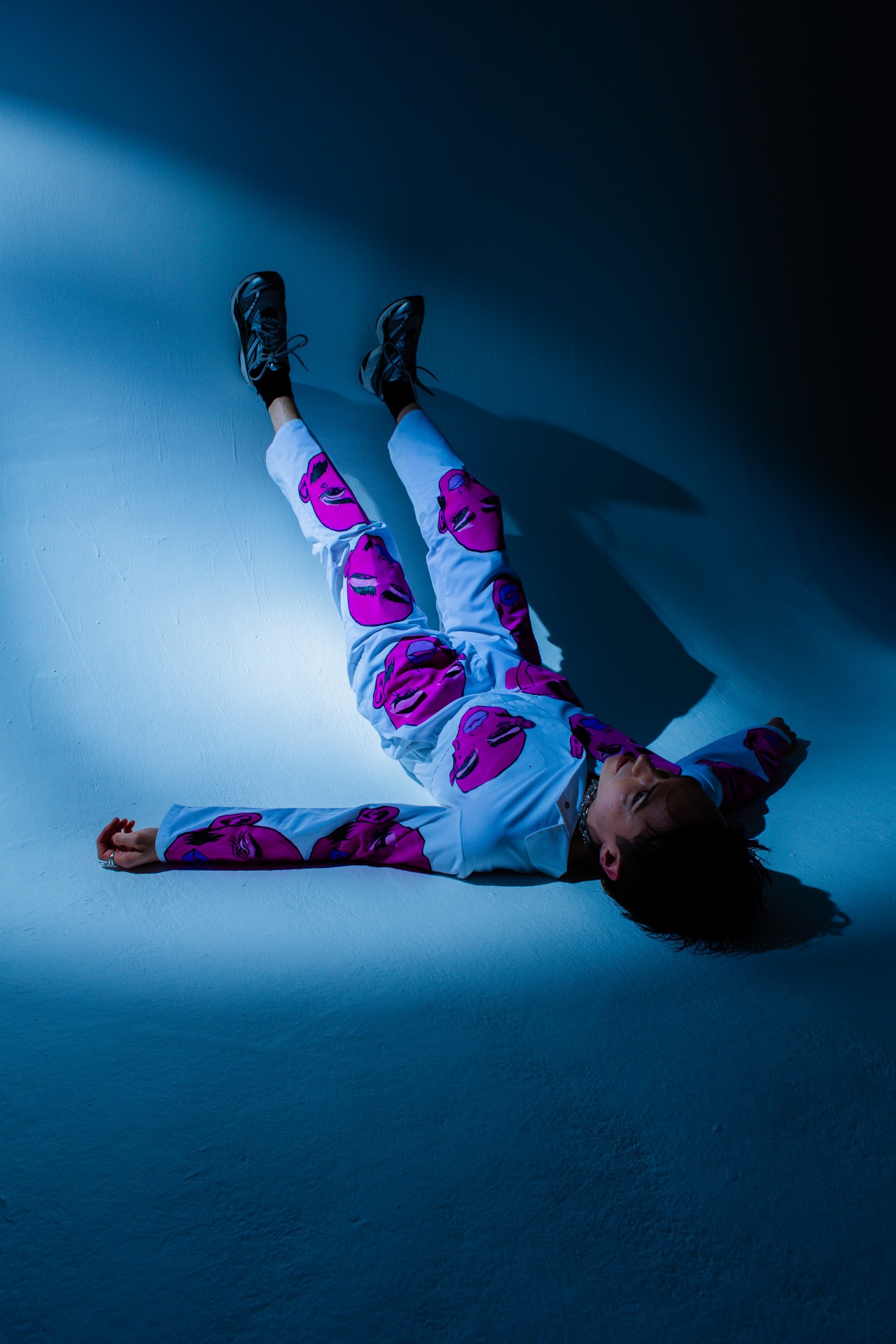

How do you go about sourcing vintage pieces for your work?
I spend a lot of time scrolling through platforms like Ebay, Depop and Vinted looking for unwanted wedding dresses. Charity shops and vintage markets are my favourite though, nothing beats a good hunt and the feeling of discovering a treasure in real life is so magical. I also find it a great way to get inspired, even if I don’t find pieces to upcycle, I’ll be photographing interesting things I find that spark ideas in me.
With the alarming increase of fast fashion in recent years, it’s refreshing to see an independent brand committed to sustainability. Can you tell us a bit more about your brand’s sustainability ethos and strategy?
It really is getting so much worse! Sustainability is at the heart of everything I create. My brand’s ethos revolves around upcycling and repurposing existing garments, transforming them into something new.
My design process is about more than just creating clothes—it’s about making a statement. Each piece carries a message about the importance of sustainability and the potential for fashion to inspire change. I want to show that fashion can be expressive and responsible, blending my artistic vision with a commitment to environmental consciousness.
From selecting materials to the final design, every step is about making thoughtful choices that minimise environmental impact. By promoting upcycling and creative reuse, I hope to inspire others to rethink their approach to fashion and consider the impact of their choices.
What informed your decision to hone in on the wedding dress as a cornerstone of the collection?
I got inspired by wedding dresses back in 2019 when I was working on my ‘act normal’ exhibition. At first, I saw the wedding dress as the ultimate symbol of un-sustainability — this elaborate, expensive gown that gets worn once and then spends its life in a box in the attic. And so my initial approach was focused on turning them into anarchic symbols of protest against outdated traditions.
I’ve come to see so much beauty in second-hand wedding dresses and so with this collection, I wanted to reassess what they mean to me. Every dress has a story — I think about the person who wore it, how it was once the most perfect thing to them, and I think about the potential heartbreak or pain that led to it being sold on eBay for a fraction of its original price.
Something about these dresses reminds me of queerness and the feelings of rejection and disregard that we, as a community, often experience. I love taking something that was once discarded and giving it new life, much like embracing our own identities and finding beauty in our uniqueness.
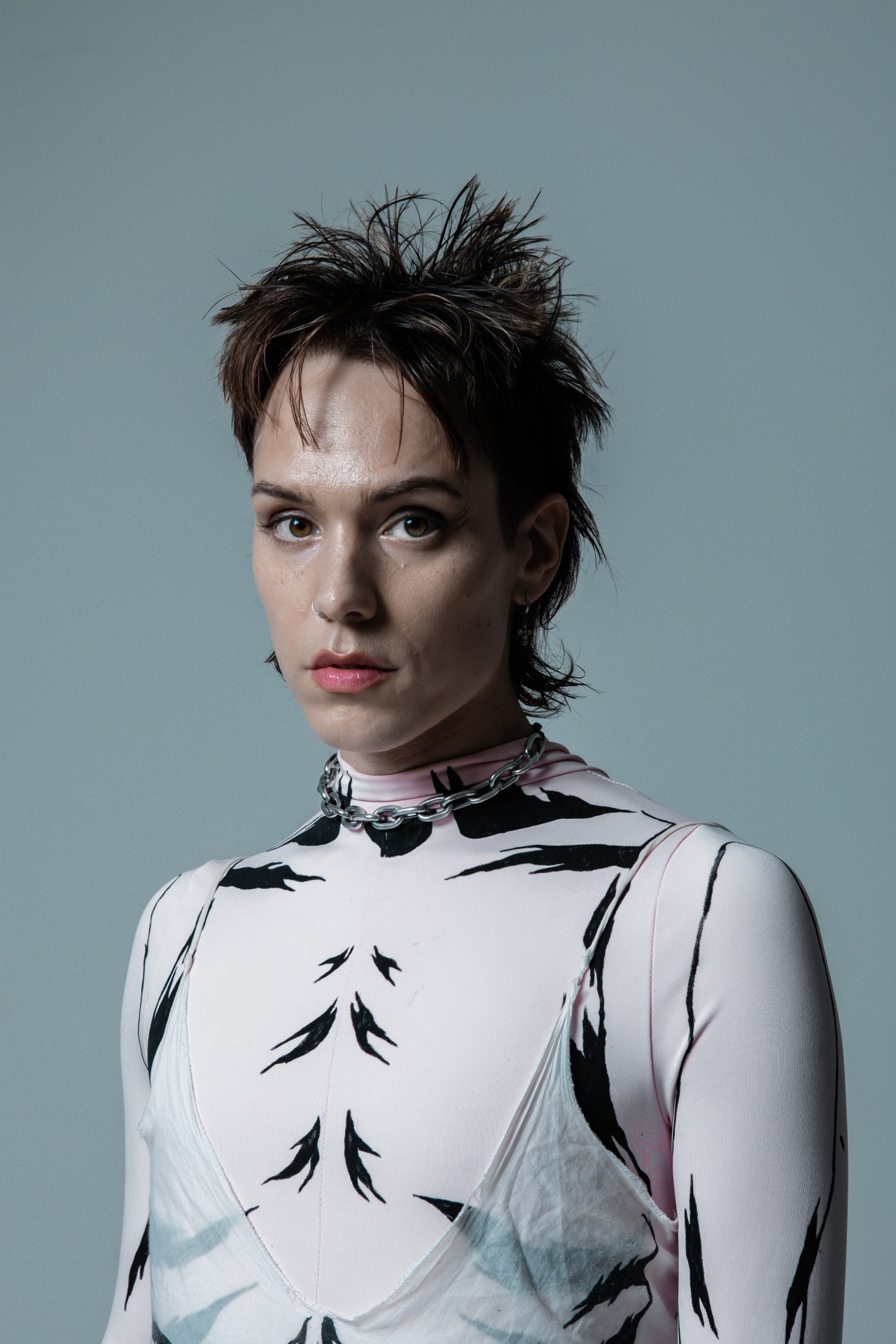
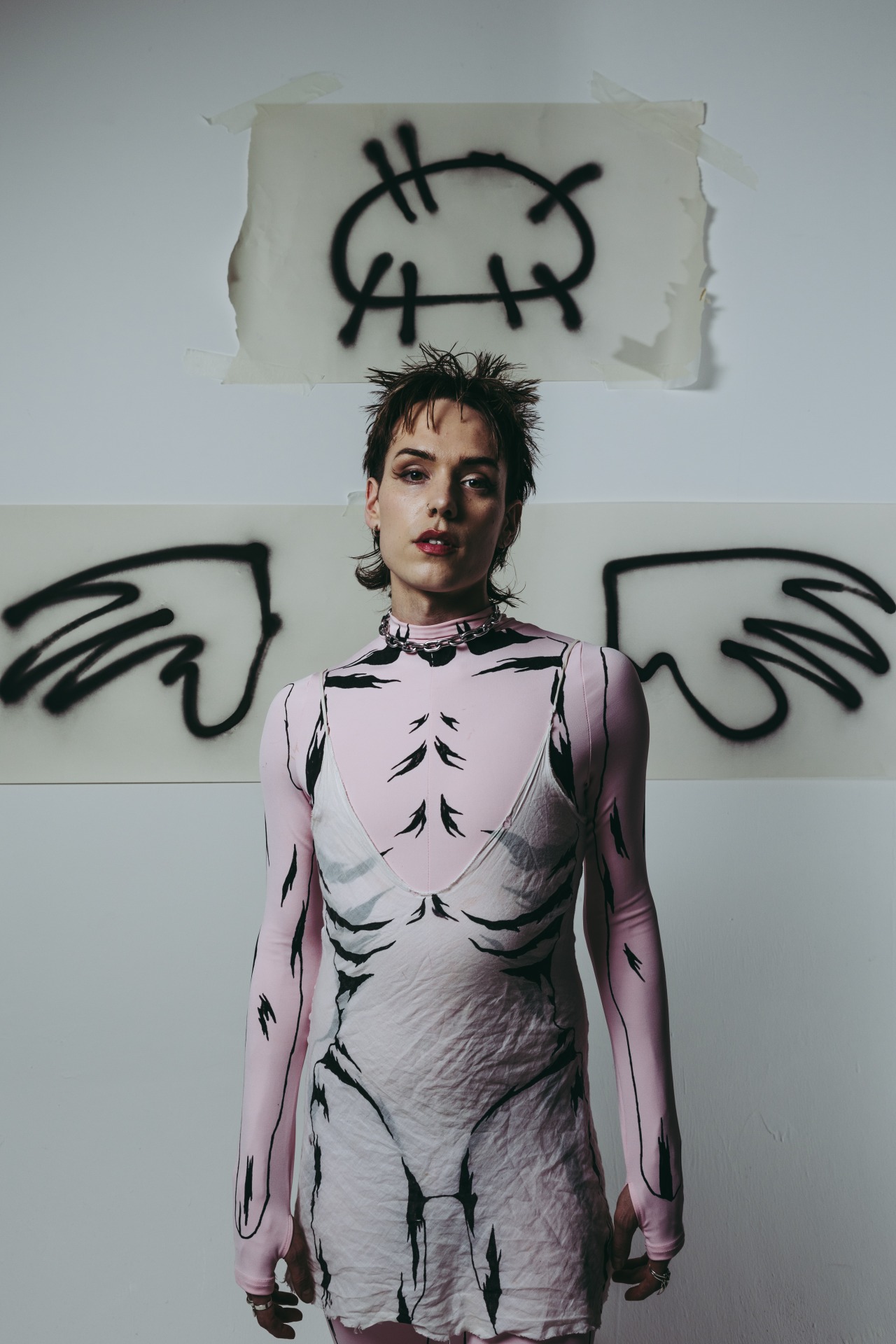
How has your lived experience as a queer artist guided your path in the fashion industry thus far?
I think my journey in understanding my queerness has taught me to embrace risk-taking and trust my intuition. Living a queer life has helped me become comfortable with unconventionality. My experience has been about accepting my differences and leaning into what makes me unique. I’ve always been drawn to the idea of ‘blazing my own trail,’ and this has definitely shaped how I navigate my career and the fashion industry. I try my best to be boldly authentic, and unapologetically myself, and that’s reflected in everything I create.
What has been the biggest challenge of your career to date?
The biggest challenge has probably been finding a balance between work life, and my mental health. As someone who struggles with rejection issues and social anxiety, it’s been incredibly hard to not let the need for validation dictate how I feel about myself or my art.
Learning that my artistic value isn’t tied to how other people perceive my work has been a tough lesson, but a rewarding one that has taught me to create from a place of love, rather than one of fear.
You studied illustration – was it always your intention to found a fashion label?
Honestly, no, it wasn’t always my intention to found a fashion label. For a long time I was quite unsure about what I wanted to do. I was really confused about who I was and what I wanted to be, but I always knew I wanted to create. Somehow, probably thanks to being an anxious avoidant, I managed to block out the pressure to settle on any one thing and just kept following my curiosity.
After uni, I went into hairdressing and did a bunch of session styling work, which was my first introduction to the fashion industry. Thinking about it now, maybe I did always know this is what I wanted to do — I just never allowed myself to think it was a possibility. It’s been a journey of discovery and embracing my creative instincts, which ultimately led me here.
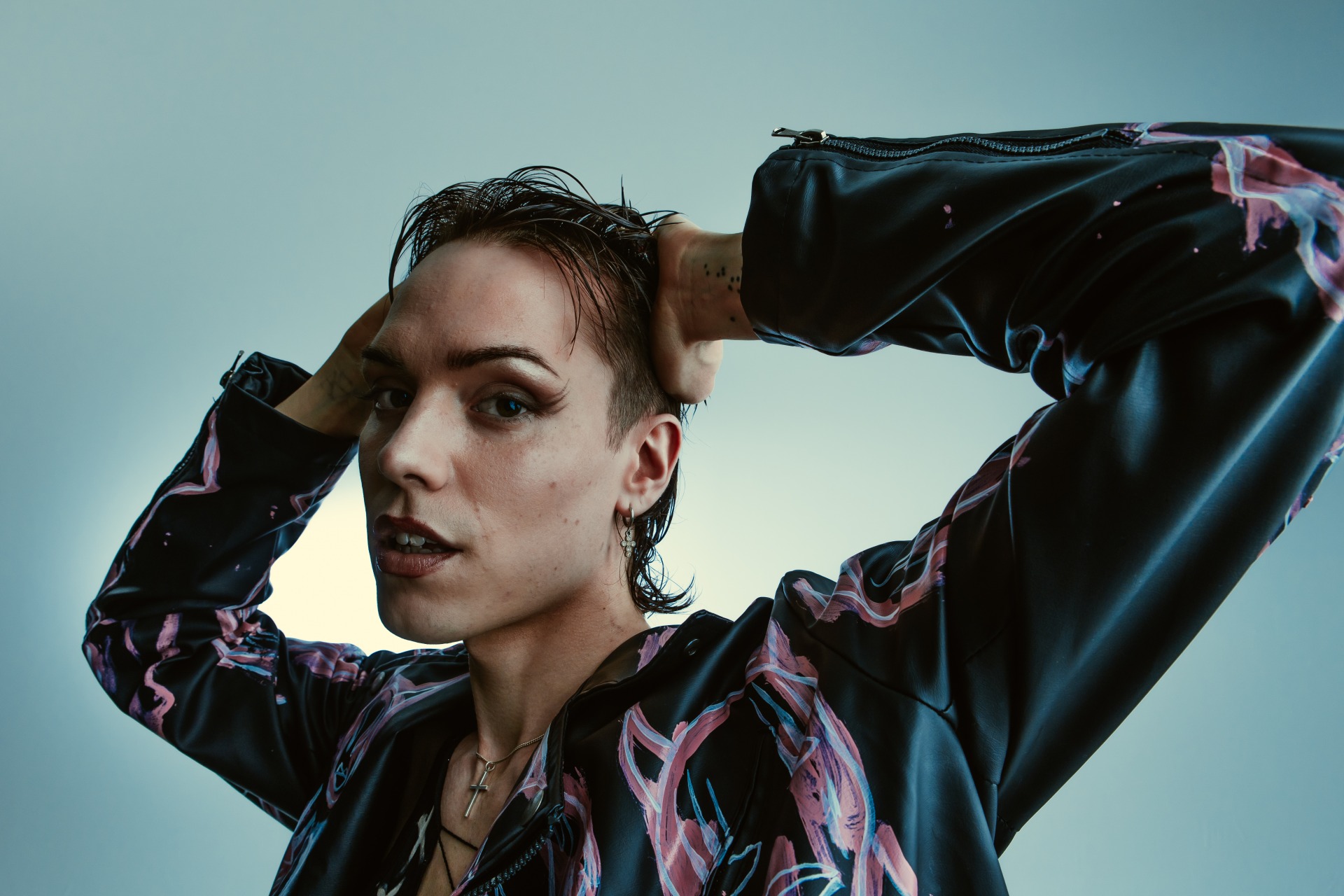
You’ve spoken about drawing inspiration from your narrative of gender and identity – do you have any people (artists, designers, or pop culture figures) who inspire your work?
I’m inspired by so many, but mostly by the creative souls around me. The London queer nightlife scene has had a huge impact on me creatively. Queer parties like ‘Dollar Baby’ and ‘Sink The Pink’ were transformative, with almost everyone in full, head-turning, over-the-top outfits — some people dedicated the entire week to crafting their looks. It was a paradise for club kids and drag queens. Looking back, these events were more than just parties; they were exhibitions of extravagant self-expression. It was the first place I saw people using their bodies as canvases for their artistic visions, and it left a lasting impression on me.
In today’s fashion landscape, which appears to be increasingly reliant on social media, what does the notion of ‘authenticity’ mean to you?
Social anxiety has been a big part of my journey, and separating the value of my art from how viral it goes online is something I constantly struggle with. I think it can be easy to forget that artists and creators are incredibly vulnerable online. We are so entwined with our work and when that work’s value is conflated with how it’s received online that can have a damaging effect on our relationship with our art and ourselves.
Authenticity to me is about staying true to my vision and letting that shine through, despite the pressures of social media. I try to regularly challenge the ‘why’ behind what I’m putting out into the world, and maintain my focus on the impact my work has on individuals rather than the numbers.
I want to make art that resonates, not just for a viral moment, but in a way that sparks thought and conversation.
Tell us about your amazing collaboration with Underground England – how did that collaboration come about?
The collaboration with Underground England has been such a cool experience! It all started when they found my work on social media. They were really into how I mix art with fashion, especially my focus on up-cycling and sustainability.
What I loved most about this collab was how open they left the brief to me. They really wanted the designs to reflect what the notion of ‘underground’ meant to me, which was such a fresh opportunity and really exciting because I felt like I got to shed light on the creative London queer scene which is such an important part of my story and creative journey. I loved deep diving into the history of The Underground and exploring how past social movements are still echoed through the London Queer community today.
We chose to use two of their iconic shoe styles for me to design onto. Each shoe was custom made with vegan friendly materials and every order is hand-painted by myself.
It’s been a fun journey seeing our ideas come to life and connecting both of our worlds!

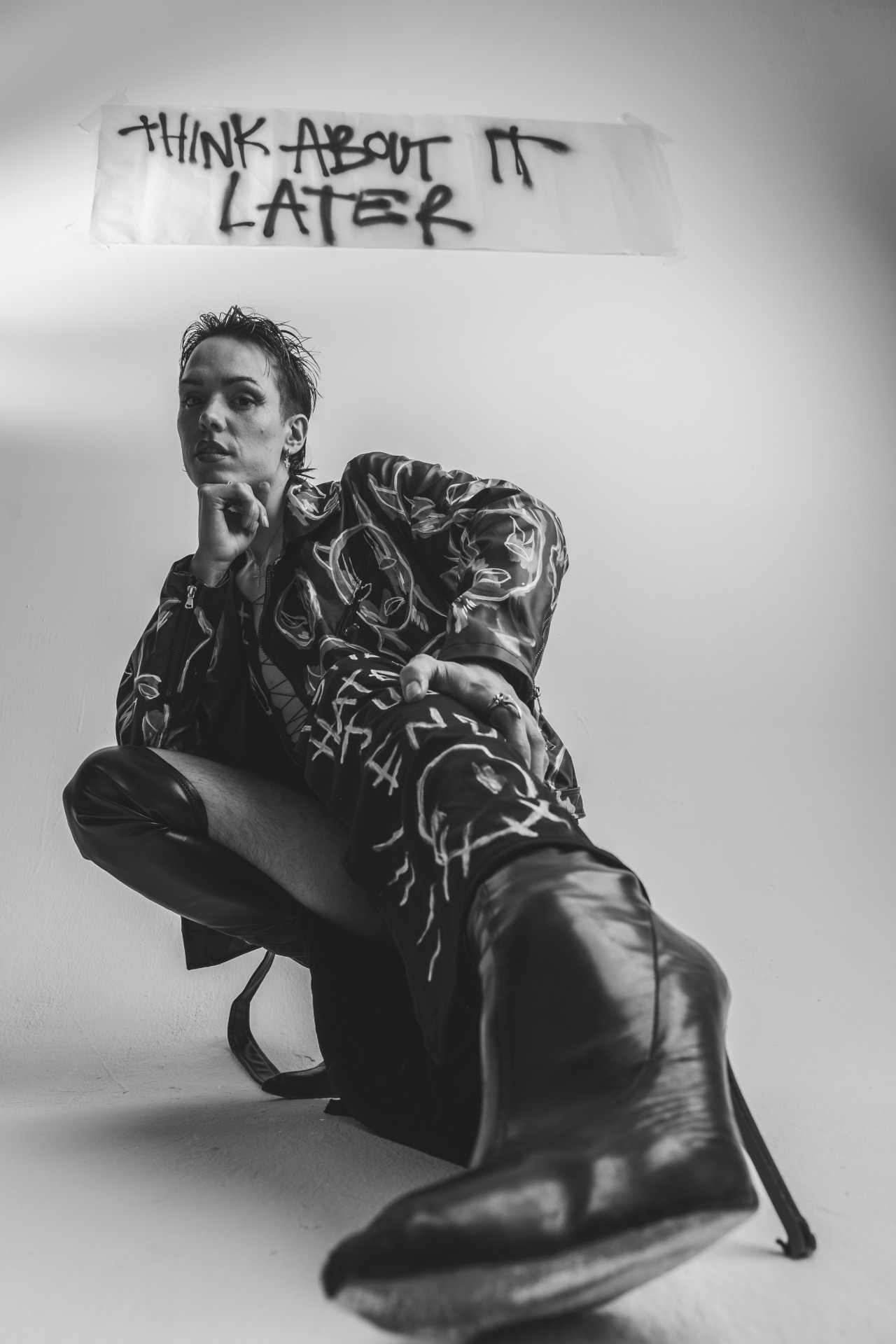
What brands or companies that you’d like to collaborate with in the future, and why?
Vivienne Westwood has been a big inspiration to me. Dr Martens is also high up on the list. I’ve always been a fan of them and I love their ethos and commitment to sustainability!
Do you have any dream celebrities that you’d like to dress one day, and why?
I would LOVE to dress Remi Wolf! Her music is so fun and her playfulness resonates with me deeply.
Follow Olli Hull on Instagram
ollihull.com
Photography: Brandon Hepworth
Words: Madeline Anderson
